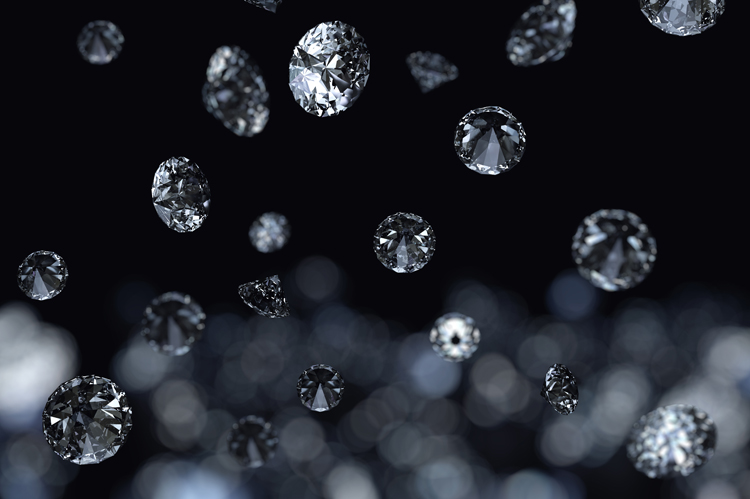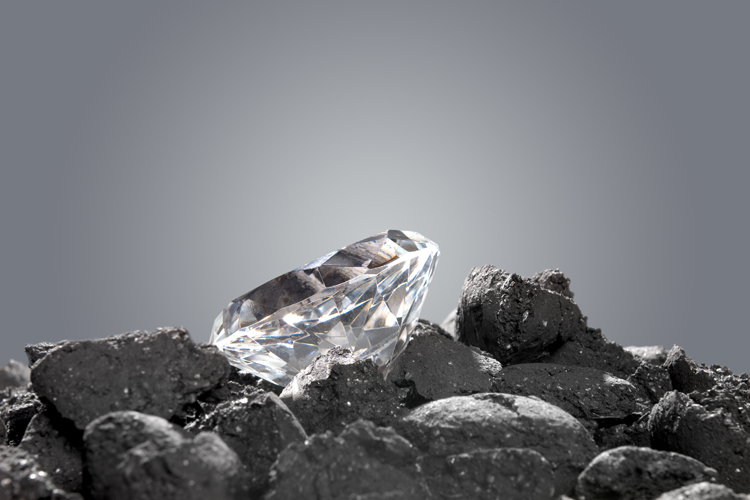The king of precious gemstones, the fiery diamond is an ancient and eternal treasure, full of mystery and secrets.
Diamonds are much more than just a beautiful ornament.
Made of pure carbon and formed by a tightly bonded atomic structure, this brilliant gem has an outstanding hardness, making it perfect for several industrial purposes.
Of all diamonds mined in the world, only 20% are gem quality. And there are some curious myths about the adamant.
As gemstones, they seduce for their brilliance and uniqueness, but there is a lot more about diamonds than the beauty that meets the eye.
Discover ten incredible facts about the most prized of all gemstones.
- The word diamond comes from the Greek word adamas meaning “unconquerable” or “indestructible”;
- Diamonds are extremely ancient. They were formed long before dinosaurs inhabited the earth and are billions of years old. Diamonds formed deep in the earth’s mantle, between 100 kilometers and 200 kilometers under the surface, at very high temperatures and pressures and were brought to the surface by deep-source volcanic eruptions;
- The natural hardness of a diamond is incomparable: it has a cutting resistance 140 times higher than ruby and sapphire, the next hardest gemstones. In 2005, a substance 11% stronger than natural diamonds called ADNRs (Aggregated Diamond Nanorods) was developed by scientists;
- 14.5 million carats of diamonds were discovered in the former Kimberley mine in South Africa. Today, the primary diamond deposits are in Botswana, Australia, Russia, and Congo;
- Diamonds can be burned because they are made of pure carbon, but only at high temperatures and under the right oxygen conditions. In pure oxygen, the ignition temperature of diamonds is 690 ºC to 840 ºC. The gem starts by glowing red, then gradually changes to orange, yellow and white. At some point, it catches fire and will burn uninterruptedly by itself, releasing a blue flame;
- A perfect and pure diamond is absolutely transparent and colorless, with no hue. However, diamonds occur in all colors, and blue, green, orange and red are the rarest and, therefore, highly valuable. The rare intensely colored diamonds are not evaluated the same way as colorless diamonds and often reach collector’s prices;
- The development of the brilliant cut is tightly linked to the history of diamonds, as it is the one that best shows the gem’s stunning luster and fire. The only man-made aspect that can influence the price of a diamond is the artistry of the cut;
- The largest gem-quality diamond ever discovered is the Cullinan Diamond, weighing 3,106 carats;
- India is the first known source of diamonds, which had the only known diamond mines until de 18th century. The gem could be found in significant alluvial deposits many centuries ago. Diamonds have been known in India for at least 3,000 years, but most likely 6,000 years;
- Diamonds can be found in meteorites and asteroids. In 2008, a meteorite exploded over the Nubian Desert in Sudan, containing diamonds significantly larger than usual. Scientists at the University of Wisconsin-Milwaukee also discovered an ancient and faint white dwarf star that is so cold its carbon has crystallized, forming an enormous diamond the size of the earth;
Learn more about diamonds.




